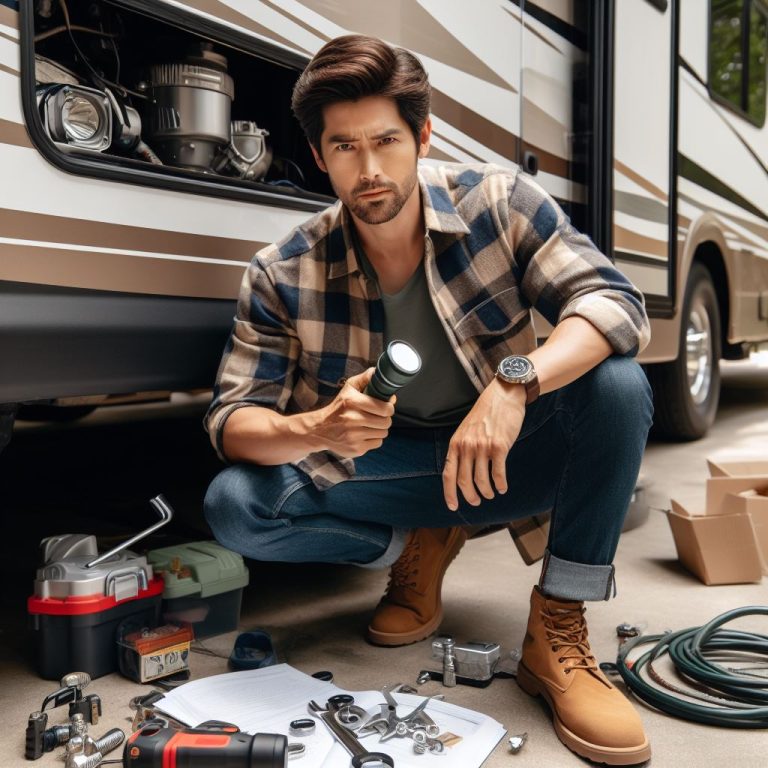
RV Heating Systems: Troubleshooting and Repair Guide
Whether you’re on a chilly mountain retreat or a winter RV adventure, a functional heating system is essential for a comfortable and safe journey. RV heating systems provide warmth and protection from the cold, but like any appliance, they can encounter problems. In this comprehensive guide, we will explore troubleshooting and repair solutions for common RV heating system issues, ensuring you stay cozy and worry-free during your travels.
Understanding RV Heating Systems
Before we delve into troubleshooting and repairs, let’s get acquainted with the main types of RV heating systems:
- Furnaces: RV furnaces are the most common heating systems. They use propane or electricity to heat the air and distribute it throughout the RV via ducts or vents.
- Heat Pumps: Some RVs are equipped with heat pumps that use electricity to both heat and cool the interior. They are energy-efficient but may not be suitable for extreme cold.
- Hydronic Heating: Hydronic heating systems use a combination of water and antifreeze to warm the RV. They can be efficient but are less common in smaller RVs.
Now, let’s explore troubleshooting and repair steps for common RV heating system issues.
Troubleshooting RV Heating Systems
Problem 1: No Warm Air from the Furnace
Solution: Check the thermostat settings to ensure the desired temperature is higher than the current room temperature. If the thermostat is set correctly, the issue may be with the furnace itself. Inspect the furnace’s air filter; a clogged filter can restrict airflow and reduce heating efficiency. Replace the filter if necessary. Also, make sure the propane supply is sufficient and the furnace is properly ignited. If the issue persists, consult an RV technician to inspect and repair the furnace.
Problem 2: Uneven Heating
Solution: Uneven heating can be due to blocked or obstructed vents. Ensure that all vents and ducts are clear of obstructions, allowing warm air to circulate evenly. Consider using portable fans to help distribute warm air throughout the RV more effectively.
Problem 3: Furnace Cycling On and Off Frequently
Solution: Furnaces that cycle on and off frequently may be dealing with a dirty flame sensor or a malfunctioning thermostat. Clean the flame sensor according to the manufacturer’s instructions. If the problem continues, consult an RV technician to diagnose and repair the issue.
Problem 4: Heat Pump Not Efficient in Cold Weather
Solution: Heat pumps are less effective in extremely cold temperatures. In such conditions, the heat pump may not be able to maintain the desired temperature. Consider using an additional heating source, such as a portable electric heater or the RV’s propane furnace, to supplement heat.
Problem 5: Cool Air from Furnace Vents
Solution: If you’re getting cool air instead of warm air from the furnace vents, check the thermostat settings. Make sure it’s set to the heating mode and not the cooling mode. Also, inspect the furnace’s air filter and replace it if necessary. If the issue persists, consult an RV technician to examine the furnace.
Problem 6: Propane Furnace Not Igniting
Solution: If your propane furnace is not igniting, ensure that the propane tank has an adequate supply of gas. Check for obstructions in the propane line and clean the burner assembly if needed. If the problem persists, consult a professional technician to inspect and repair the furnace.
Problem 7: Hydronic Heating System Leaks
Solution: Hydronic heating systems can develop leaks over time. If you notice coolant or antifreeze leaks, locate the source of the leak and seal it. This may require tightening connections or replacing damaged components. Consult your RV’s manual or an RV technician for guidance on locating and repairing leaks.
Maintenance Tips for RV Heating Systems
- Regular Furnace Inspection: Inspect the furnace before each trip to ensure it’s clean, free of debris, and functioning properly.
- Air Filter Maintenance: Clean or replace the furnace’s air filter at regular intervals to ensure efficient heating.
- Check Vents and Ducts: Inspect vents and ducts for obstructions or blockages, and keep them clear for even heating.
- Thermostat Calibration: Calibrate the thermostat to ensure accurate temperature control.
- Routine Hydronic System Checks: If your RV has a hydronic heating system, regularly check for leaks and inspect the coolant level.
- Test Emergency Shut-Off: Familiarize yourself with the emergency shut-off procedures for propane furnaces to ensure safety in case of malfunctions.
Your RV’s heating system is a vital component that keeps you warm and comfortable during your travels. By understanding common RV heating system issues and the troubleshooting and repair steps outlined in this guide, you can ensure your heating system remains in good working order. Remember that safety is a top priority when dealing with propane systems, so follow manufacturer guidelines and consult professional technicians when necessary. With proper care and maintenance, you can enjoy cozy and comfortable adventures in your RV, no matter the weather outside.